Title of the work
Country of the First Edition
Country/countries of popularity
Original Language
First Edition Date
First Edition Details
Jerzy Pilikowski, Synowie Timokratesa. Warszawa: KAW, 1985, 56 pp.
ISBN
Genre
Historical fiction
Target Audience
Crossover (children, teenagers, young adults)
Cover
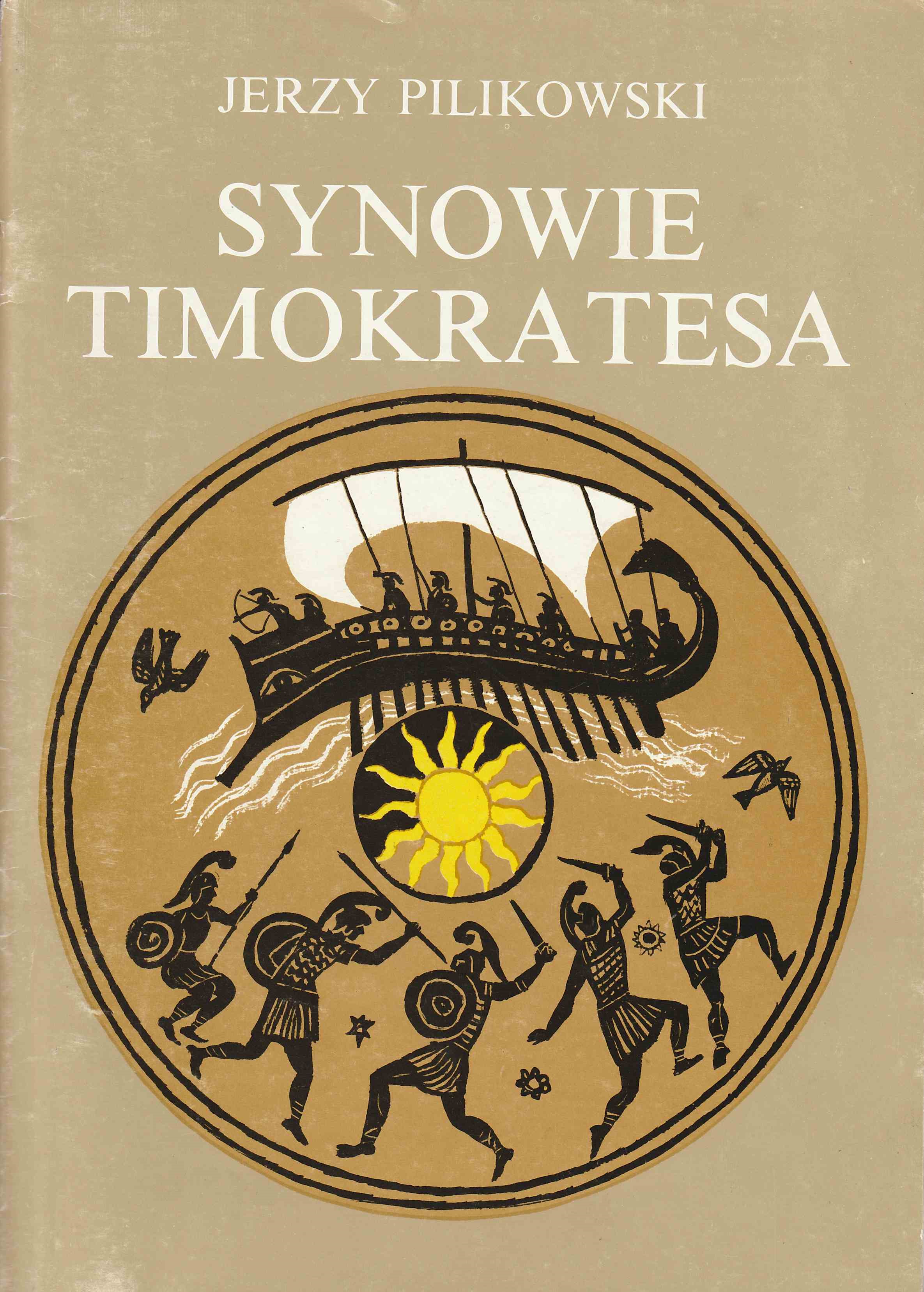
Cover designed by Zbigniew Łoskot. Courtesy of his son Jacek Łoskot.
Author of the Entry:
Marta Pszczolińska, University of Warsaw, m.pszczolinska@al.uw.edu.pl
Peer-reviewer of the Entry:
Elżbieta Olechowska, University of Warsaw, elzbieta.olechowska@gmail.com
Katarzyna Marciniak, University of Warsaw, kamar@al.uw.edu.pl

Jerzy Pilikowski
, b. 1952
(Author)
Jerzy Pilikowski graduated from the Jagiellonian University of Cracow with a degree in History. He has been working in education for over 27 years as a history and civics teacher. He also led a humanistic elective and took part in the preparations of new curricula and textbooks. In 2000, he was awarded the Medal Komisji Edukacji Narodowej [National Education Commission medal]. He is an author of textbooks, educational books and belles-lettres novels, such as Synowie Timokratesa [Timocrates’ Sons] (1985), Opowieści Gęsiego Pióra [Goose Quill’s Tales] (1988), Po drugiej stronie Dunaju [On the Other Side of the Danube] (1989).
Sources:
Profile at Sztukater wywiady (accessed: February 21, 2022).
Profile at Lubimy czytać (accessed: February 21, 2022).
Bio prepared by Marta Pszczolińska, University of Warsaw, m.pszczolinska@al.uw.edu.pl

Photograph courtesy of Jacek Łoskot, the Artist's Son.
Zbigniew Łoskot
, 1922 - 1997
(Illustrator)
Zbigniew Łoskot (1922–1997) was a Polish painter, illustrator, printmaker and graphic designer. He was born in Warsaw, where he passed his high school final exam in clandestine courses during the Nazi occupation in 1942. He cooperated with the magazine Sztuka i Naród [Art and Nation]. He graduated from the Faculty of Painting at the Akademia Sztuk Pięknych im. Jana Matejki (Jan Matejko Academy of Fine Arts) in Cracow in 1949 (he finalized his degree in 1954). He was active in various areas and techniques of art, such as monumental wall painting, frescoes, sgraffito, mosaics, stained glass, easel painting (oil, tempera), woodcut, linocut or drypoint. He was well known for his sacred art – he designed and decorated many churches and chapels rebuilt and built after WW2, including the Primate’s of Poland chapel in the Warsaw Metropolitan Cathedral, all together, ten chapels and over twenty churches.
As an illustrator, he cooperated with many publishers, including Pallotinum, where he designed the cover and jacket of the Millennium Bible – the most famous 20th-cent. Polish edition of the Bible. Among other publishing houses, he worked for were also Iskry, KAW, PAX and Nasza Księgarnia, where he illustrated mainly books for children. He exhibited multiple times in Poland and abroad in individual or group shows. His works are held by the Vatican Museums, various Polish museums, Éditions du Dialogue founded in Paris by Polish Pallottines in 1966, and Pallottine collections in Rome.
In 1972, Nasza Księgarnia published Kolorowy świat – ilustracje w książkach „Naszej Księgarni” 1921–71 [Coloured World – illustrations in books by „Nasza Księgarnia”] including also works by Zbigniew Łoskot with the child reader in mind.
Source:
Official website (accessed: February 25, 2022).
Bio prepared by Marta Pszczolińska, University of Warsaw, m.pszczolinska@al.uw.edu.pl
Summary
Rhodes, 201 BC, shortly before the end of the Second Punic War. The Rhodian city-state seems to be the last truly free Greek territory facing a significant threat to their free trade in the Mediterranean from the Macedonians, who are in alliance with Cretan pirates. Timokrates*, a wealthy merchant, leads his youngest son, 15-year-old Nikanor, to the port to join a trireme crew so that he could become a sailor and serve his city-state. His oldest son died in a naval battle, and the second one, Krateros, is missing, probably dead, along with his ship “Pegasus”. Nikanor takes an oath to find his brother or learn about his fate; Krateros’ fiancée gives him her engagement ring. Timokrates sends Nikanor to Alexandria to learn the trade and check why his Alexandrian agent Lykon complains that the business is getting worse and worse and has stopped sending any profits.
During the trip, Nikanor learns that his teacher, Kleofanes, is on board to watch over his student. When a storm comes, the boy saves a shipwrecked survivor, Cyclops, who speaks with a Macedonian accent. According to the orders, he is to be executed in Alexandria. Nikanor does not believe in his guilt as Cyclops was just a galley slave on a Cretan pirate ship; with Kleofanes’ help, the boy manages to secretly free the man.

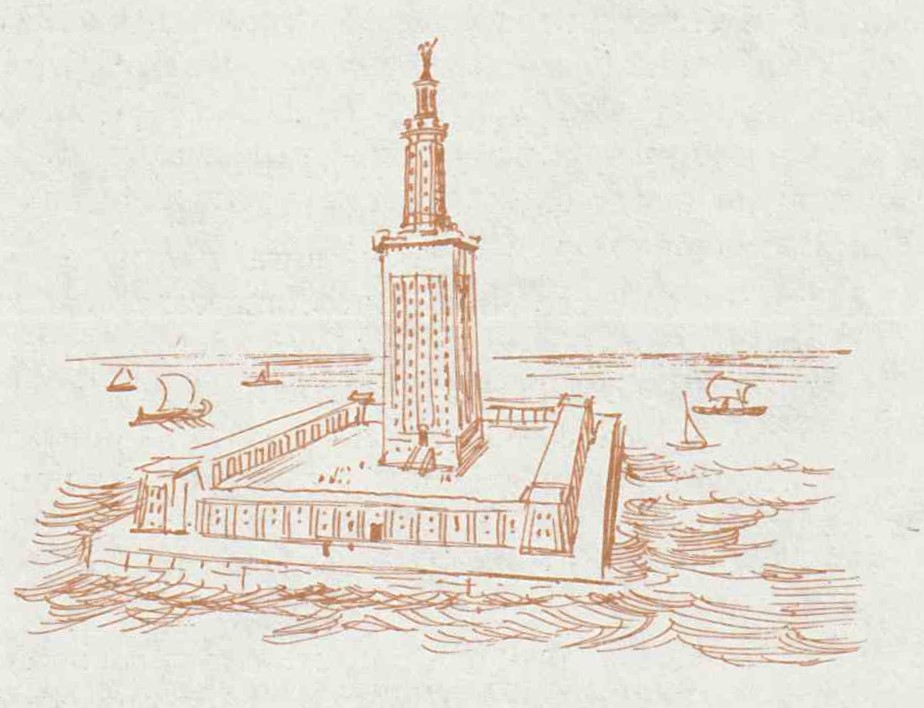
In Alexandria, the boy admires the city and all its attractions. He overhears that Lykon is cheating his father and conspires with Macedonians and Cretans who plan to overcome the Rhodians. He is captured and sold as a slave to the Theban district to prevent him from revealing Lykon’s treachery.
Nikanor works as a Greek scribe. Fortunately, the faithful Kleofanes helps him escape during the sacrifices in Ammon’s temple; for cover, they join a group of Egyptian companions travelling back to Alexandria. There, they manage to embark on a ship to Ephesus via Rhodes, and everything seems hopeful.
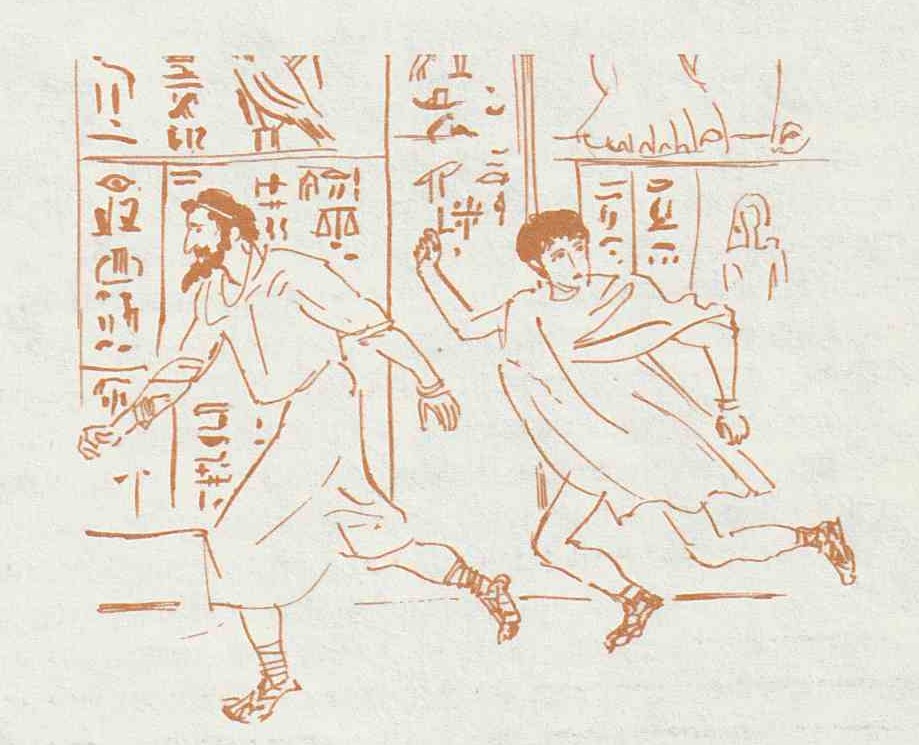
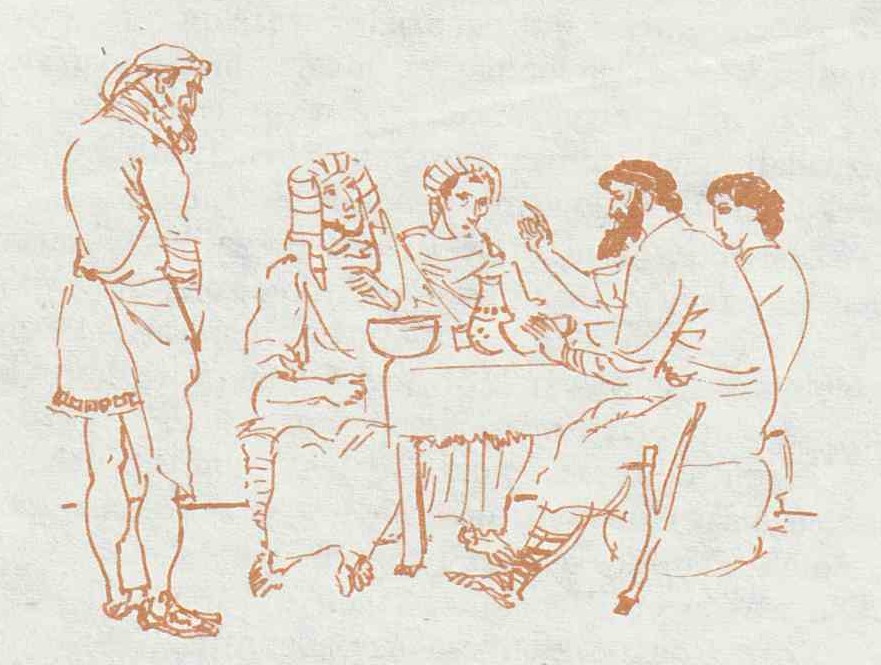
They are attacked by a Cretan pirate ship close to home, captured and sold as slaves to Pella. Nikanor works in the stables and Kleofanes in the palace office, where he discovers a letter from Lykon to Heracleides of Taranto, proof of Lykon’s treason. Nikanor steals the letter and learns that his missing brother is still alive and was sold to Kydonia in Crete. He is taken again and sent to work logging in the North of Macedonia, but the letter is safely hidden.
One day, Nikanor flees and unexpectedly meets Cyclops, who returned to his family. Together with some highlanders, they free slaves from Nikanor’s unit and Kleofanes from his dungeon. They take over a pirate ship and plan an offensive on Kydonia, the pirate nest, to free Krateros, the missing brother. The action is daring, but thanks to the ring, Nikanor is recognized, and Krateros’ crew joins them. Eventually, they are freed, and the pirate ships are destroyed in the harbour. They sail to Rhodes, where a touching reunion takes place.
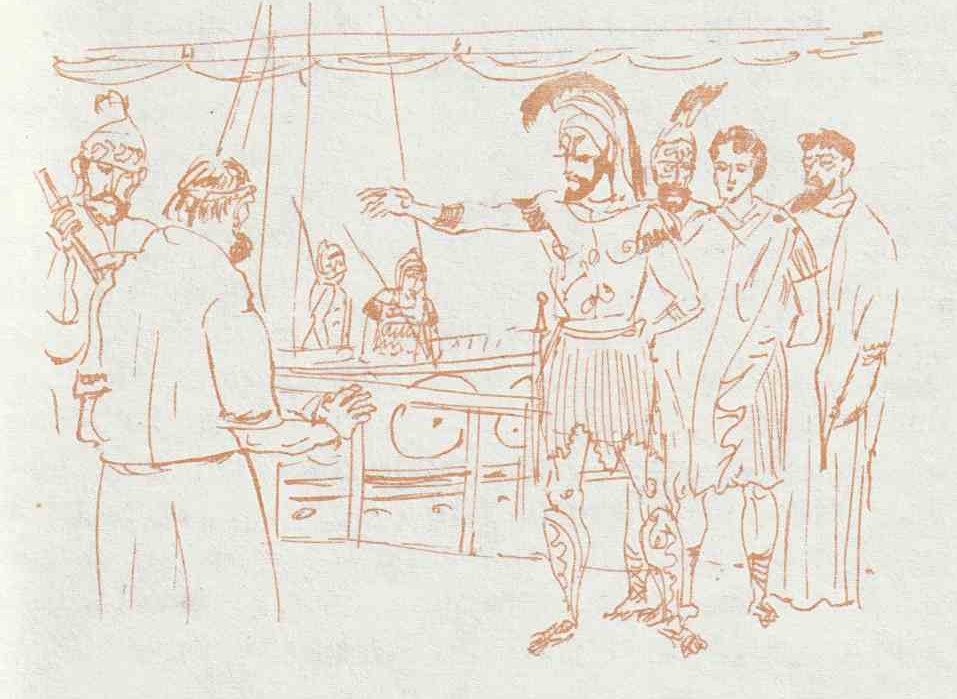
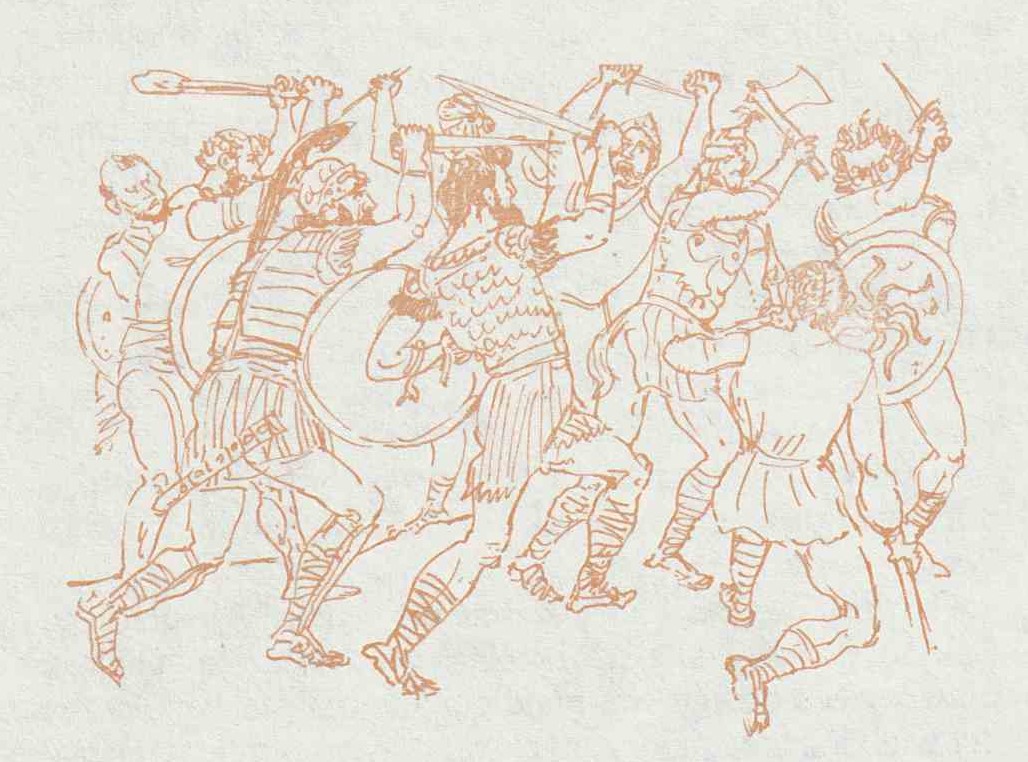
Illustrations courtesy of Jacek Łoskot, the Artist's son.
* Polish spelling of the names of characters has not been anglicized.
Analysis
The novel is set in the Hellenistic world at the end of the Second Punic War. Fantastic adventures, abduction by pirates, being sold twice into slavery, and anagnorisis culminating in a family reunion, are all motifs that bring to mind the literary genre of Hellenistic romance.
The novel is written with child readers in mind and uses the child protagonist’s eyes to provide the contemporary readers with what they do not know about antiquity. As Nikanor goes to Alexandria for the first time, everything there is new and exciting to him and the other young characters there – Roman boys who are nephews of Scipio Africanus. This way, the young reader, unfamiliar with the ancient city, learns about its marvels alongside Nikanor. The character of Kleofanes, the paidagogos, who accompanies his charge as a teacher and a caring friend, serves the same educational goal – he can answer all the questions asked by the boy, presumably of interest, in the same way he would for the reader. Similarly, information about ancient slavery, sea journeys, or danger from piracy at that time is retained while reading about Nikanor’s fate. Many aspects of everyday life, important at those times, are presented as the background for the adventures of the brave Rhodians. The reader learns about institutions of public life, such as gymnasia, porticos, and temples, reads about religious sacrifices, sailing, international trade, Egyptian rituals, or historical background illuminating the political scene. A single theme strongly highlighted in the novel is the city of Alexandria, the capital of wisdom and the leading city in the Mediterranean. Its origin, topography, districts, famous buildings and the most eminent institution – the Museion as the temple of literature and science – are described in detail as if a tourist guide took the reader on a tour of the Alexandrian attractions and wonders.
Even though the novella is aimed at children and prima facie constitutes a typical action and adventure story, not only the action and descriptions of exotic places are important. The author raises some crucial social issues, such as slavery and the constant threat from cruel and ruthless pirates. Slavery seems to be the most important concern as the protagonist is sold twice. In a world where his father owns slaves, and the family wealth is built on their work, the boy does not even realize their constant presence. When he is sold into slavery for the first time, he is not forced to work hard in the fields as other slaves in Egypt were. Kidnapped for the second time when waiting on Delos to be sold, Nikanor talks with his mentor in an ergastulum:
"— After all, does my father also own slaves?
— He does.
— Are they so unhappy too? (…) Does one person in the world have to live at the expense of another?
— No — (…) — supposedly, a long time ago during the golden age, all people were free and happy." (p. 30)
The dialogue reveals an emerging awareness of social inequality, the harsh situation of captured people, their cruel treatment, the pain of being separated from their families, the unpredictability of fate, and the hope that slowly dies day after day. When the boy reads about his brother’s sale, it is clear that everyone, not only a young boy and an elder teacher, can become enslaved and live as talking property, forced to work for their masters, deprived of the recognition of their humanity. This way of picturing ancient piracy is far from the comic and entertaining adventures known from the Astérix series or the Pirates of the Caribbean. The Cretans and the Macedonians condemn ordinary people to the most miserable fate of losing everything but mere existence.
Further Reading
Brulé, Pierre, La piraterie Cretoise hellénistique (Centre de Recherches d'Histoire Ancienne 27), Paris: Les Belles Lettres, 1978.
Erskine, Andrew, “Culture and Power in Ptolemaic Egypt: The Museum and Library of Alexandria”, Greece & Rome 42.1 (1995): 38–48.
May, J. M. F., “Macedonia and Illyria (217-167 B.C.)”, The Journal of Roman Studies 36 (1946): 48–56 (accessed: February 25, 2022).
Addenda
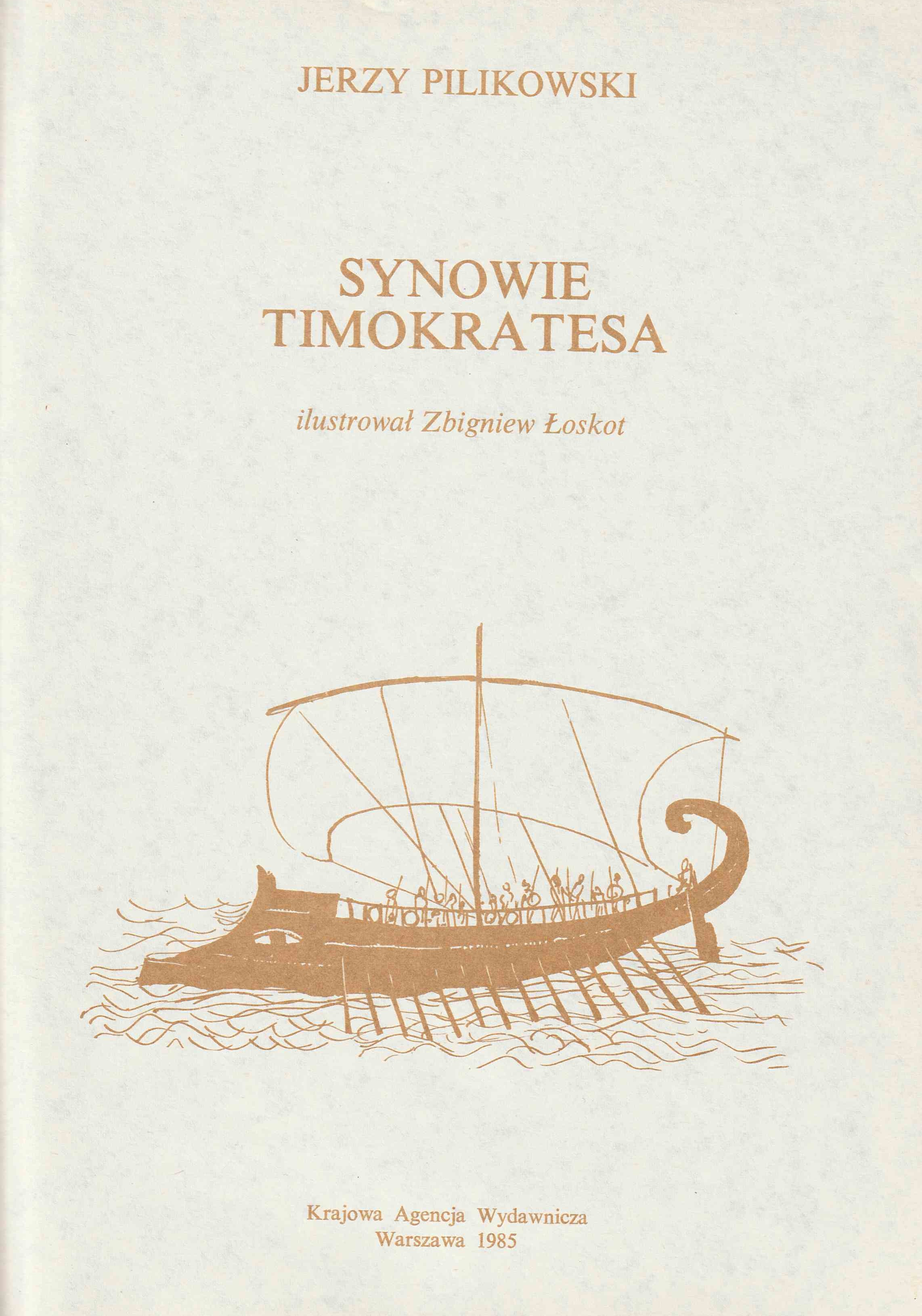
Courtesy of Jacek Łoskot.


